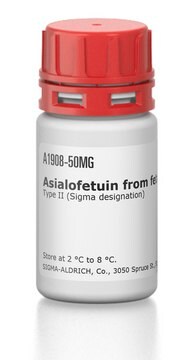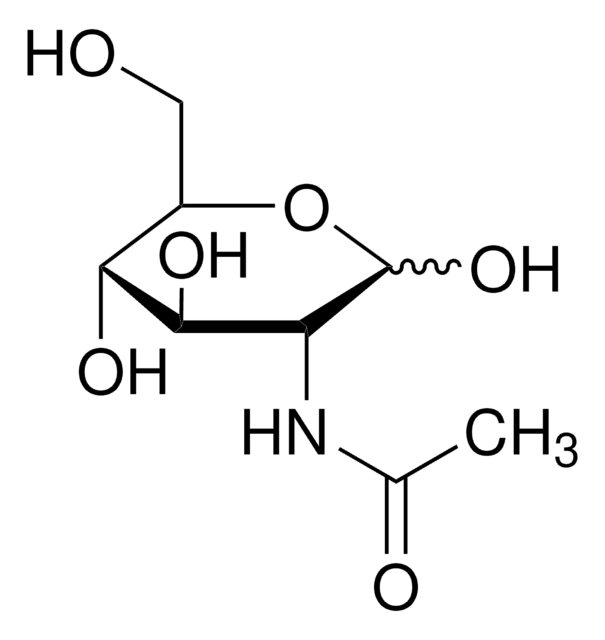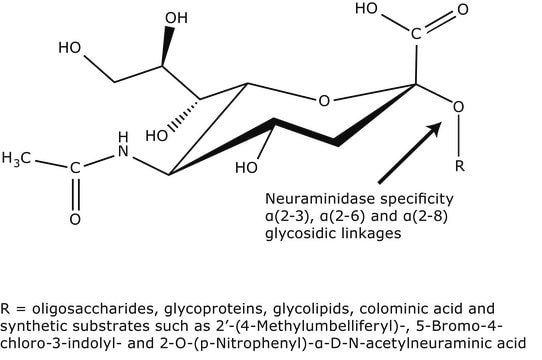A4781
Asialofetuin from fetal calf serum
Type I (Sigma designation)
Synonim(y):
Asialofetuin
About This Item
Polecane produkty
pochodzenie biologiczne
bovine (calf) serum
Poziom jakości
typ
Type I (Sigma designation)
Postać
powder
zanieczyszczenia
salt, essentially free
≤0.5% N-acetylneuraminic acid
rozpuszczalność
0.85% sodium chloride: soluble 1 mg/mL
temp. przechowywania
2-8°C
Szukasz podobnych produktów? Odwiedź Przewodnik dotyczący porównywania produktów
Opis ogólny
Zastosowanie
- to quantitate the plant Ricin toxin′s B subunit (RTB) lectin activity in β-phaseolin signal peptide (P)–proinsulin gene (INS)–RTB plants by enzyme-linked immunosorbent assay (ELISA)
- quantitate VP7:RTB fusion protein in transformed potato tissues by ELISA
- as a glycoprotein substrate to measure the receptor-binding activity of recombinant RTB and NSP490–RTB fusion proteins
- to study the nature of the interaction between ferritin and the placenta
Działania biochem./fizjol.
Uwaga dotycząca przygotowania
Kod klasy składowania
11 - Combustible Solids
Klasa zagrożenia wodnego (WGK)
WGK 3
Temperatura zapłonu (°F)
Not applicable
Temperatura zapłonu (°C)
Not applicable
Środki ochrony indywidualnej
Eyeshields, Gloves, type N95 (US)
Certyfikaty analizy (CoA)
Poszukaj Certyfikaty analizy (CoA), wpisując numer partii/serii produktów. Numery serii i partii można znaleźć na etykiecie produktu po słowach „seria” lub „partia”.
Masz już ten produkt?
Dokumenty związane z niedawno zakupionymi produktami zostały zamieszczone w Bibliotece dokumentów.
Nasz zespół naukowców ma doświadczenie we wszystkich obszarach badań, w tym w naukach przyrodniczych, materiałoznawstwie, syntezie chemicznej, chromatografii, analityce i wielu innych dziedzinach.
Skontaktuj się z zespołem ds. pomocy technicznej






